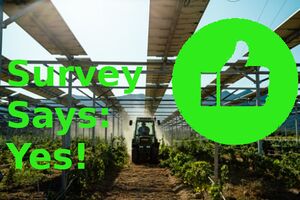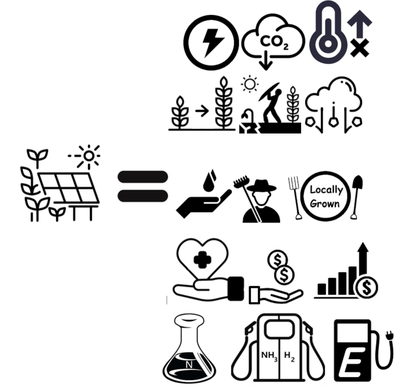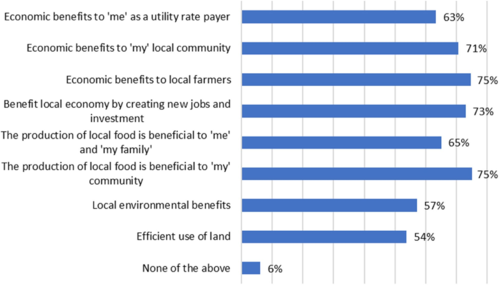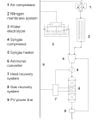
Agrivoltaic systems integrate agricultural production with solar photovoltaic electricity generation. Given the proven technical, economic, and environmental co-benefits provided by agrivoltaic systems, increased proliferation is anticipated, which necessitates accounting for the nuances of community resistance to solar development on farmland and identifying pathways for mitigation. Minimizing siting conflict and addressing agricultural communities' concerns will be key in continued deployment of agrivoltaics, as localized acceptance of solar is a critical determinant of project success. This survey study assessed if public support for solar development increases when energy and agricultural production are combined in an agrivoltaic system. Results show that 81.8% of respondents would be more likely to support solar development in their community if it integrated agricultural production. This increase in support for solar given the agrivoltaic approach highlights a development strategy that can improve local social acceptance and the deployment rate of solar. Survey respondents prefer agrivoltaic projects that a) are designed to provide economic opportunities for farmers and the local community b) are not located on public property c) do not threaten local interests and d) ensure fair distribution of economic benefits. Proactively identifying what the public perceives as opportunities and concerns related to agrivoltaic development can help improve the design, business model, and siting of systems in the U.S.
See also[edit | edit source]

- Coal with Carbon Capture and Sequestration is not as Land Use Efficient as Solar Photovoltaic Technology for Climate Neutral Electricity Production
- Dual use of land for PV farms and agriculture literature review
- sheep
- Israeli white plastic reflectors
- A Farmer's Guide to Going Solar (NREL)
- German guidelines: https://www.ise.fraunhofer.de/content/dam/ise/en/documents/publications/studies/APV-Guideline.pdf
- 2021 review
- Miskin, C.K., Li, Y., Perna, A., Ellis, R.G., Grubbs, E.K., Bermel, P. and Agrawal, R., 2019. Sustainable co-production of food and solar power to relax land-use constraints. Nature Sustainability, 2(10), pp.972-980.
- Retrofitting solar parks for agrivoltaics
- Shading PV
- Alexis' talk at American Solar Grazing Association2021
In the News[edit source]
- Agrivoltaics: solar energy + better crops Climate and Nature
- Why solar power and farmers’ fields could be the perfect combination TVO
- Solar farms and sheep show the makings of a clean energy classic duo Business Renewables
- Agrivoltaics charge up St. Albert-area farms St Albert Gazette
- Sheep, solar and crops. How some Alberta farms are creating ideal growing conditions Western Wheel
- Sheep, solar and crops. How some Alberta farms create ideal growing conditions Voxpopuli
- Protein bars from recycled plastic bottles? An indoor farm on wheels? Western prof gets innovative with green tech Toronto Star
- 加拿大环保狂人回收塑料瓶制成蛋白棒 还有可移动室内农场!? Lahoo
- Solar
- Papers
- Agrivoltaics
- Solar power
- Solar energy
- Photovoltaics
- Sustainable development
- Agriculture
- SDG02 Zero hunger
- SDG07 Affordable and clean energy
- SDG08 Decent work and economic growth
- SDG09 Industry innovation and infrastructure
- SDG12 Responsible consumption and production
- Energy
- Land use
- Energy policy
- Farming
- FAST Completed





































